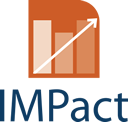Part 5 : How can PHS policies be monitored ?
The aim of this part is to guide Member States on the assessment of their PHS measures. We focus first on monitoring and assessing the measures with regard to their objectives. In the last chapter we focus on the assessment of measures in terms of budgetary effects.
Monitoring and assessing the measures are key to designing effective PHS-supporting policies. Indeed, it helps to assess whether objectives have been met and, more generally, to identify the effective impact of the measure. This is a crucial step in designing effective policies, given that the results of the monitoring and assessment will enable conclusions to be drawn on whether some specifications of the measure need to be changed. For example, assessment and monitoring will help to identify whether the price of PHS is low enough to tackle undeclared work but also bring about sufficiently high quality formal PHS, whether additional training and quality guarantee schemes must be designed to improve the quality of the services, and so on.
However, even if PHS monitoring is crucial, evidence shows that many Member States have difficulties implementing a monitoring system and that they do not have enough data. Even the net cost of the system is not calculated in many Member States. Therefore, when implementing a policy, policymakers could directly identify the necessary steps to providing monitoring and assessment, possibly with the help of researchers.






